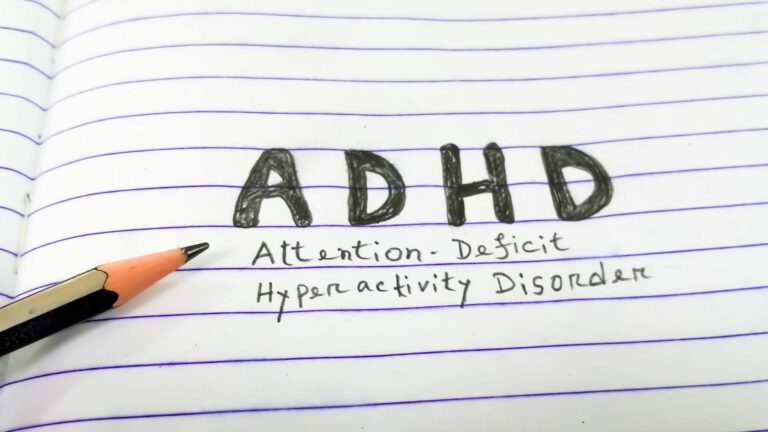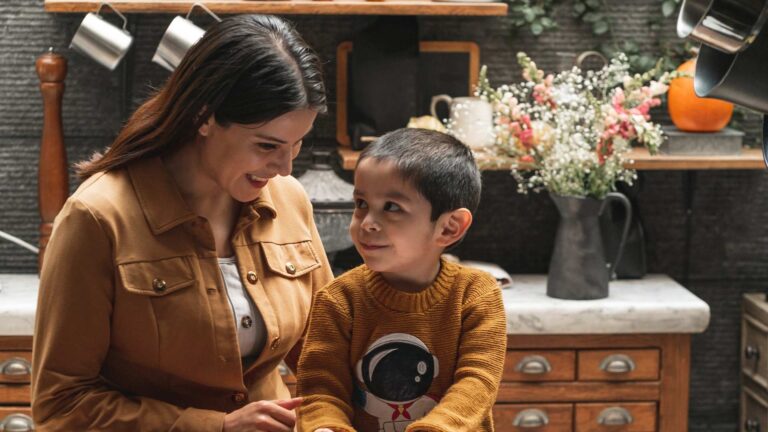Table of Contents
What’s the difference between nonverbal and nonspeaking?
Communication is a fundamental part of human connection, yet for many individuals with autism spectrum disorder (ASD), traditional spoken language isn’t their primary way of expressing themselves. If your child has autism and struggles with verbal communication, you may have encountered the terms nonverbal and nonspeaking. While they may sound similar, they describe different experiences and abilities.
For many parents and caregivers, discovering that their child isn’t meeting typical speech milestones can be a source of anxiety. Questions like “Will my child ever speak?” or “How can I help them communicate?” are common concerns. But it’s important to remember that speech is just one way to communicate, and individuals on the spectrum often find other effective methods that suit their unique needs.
By exploring what it means to be nonverbal or nonspeaking, the challenges associated with communication in autism, and the various support strategies available, families can help their children develop meaningful ways to express themselves. Let’s take a closer look at these terms and how to foster communication skills in individuals with ASD in this blog by ABA Centers of Georgia.
What Is the Difference Between Nonverbal and Nonspeaking?
Although the terms “nonverbal” and “nonspeaking” are often used interchangeably, they have distinct meanings.
- Nonverbal communication, according to the American Psychological Association, refers to individuals who do not develop spoken language or who have minimal verbal abilities. In this case, it means that they may not use spoken words to communicate at all, relying entirely on alternative communication methods such as gestures, sign language, or assistive devices.
- Nonspeaking, on the other hand, includes individuals who may have some level of verbal ability but cannot consistently use spoken language for communication. This process could be due to motor planning difficulties, sensory processing issues, or situational factors that make speaking difficult or unreliable.
Some individuals with autism who identify as nonspeaking may have a speech but struggle to use it functionally in daily interactions. Others might be partially verbal, meaning they can say a few words or phrases but cannot hold a whole conversation. The key takeaway is that being nonspeaking does not mean a person does not understand language or cannot communicate; it means their communication happens in different ways.
Moreover, according to the National Library of Medicine, children with ASD often have language difficulties, and 25% to 30% of them don’t use verbal language to communicate or are minimally verbal, using fewer than 30 words.
Communication Challenges in Autism
Individuals with autism experience a range of communication difficulties. These challenges may affect verbal expression, comprehension, and social interaction. Some of the most common communication difficulties, according to the National Institute on Deafness and Other Communication Disorders, include:
Delayed or absent speech development: Some children on the spectrum may develop speech later than their peers, while others may not develop spoken language at all.
Difficulty with social communication: Another remarkable characteristic of autism is struggling with understanding and using nonverbal cues like eye contact, facial expressions, and tone of voice.
Echolalia (repeating words or phrases): Some individuals repeat words or phrases they have heard instead of generating original speech, which can sometimes serve as a way to communicate but may also indicate challenges in spontaneous expression.
Challenges in processing spoken language: For some, the communication may take longer to understand and respond to verbal communication, which can make conversations difficult.
Sensory-related communication barriers: Overwhelming environments or sensory sensitivities may make verbal communication difficult, leading some individuals to rely on alternative forms of expression.
Alternative Communication Methods for Nonverbal and Nonspeaking Individuals
While many people may believe that verbal communication is the primary way to be understood, it is essential to recognize that spoken language isn’t the only way to communicate; many individuals with special needs benefit from alternative communication methods that help them express themselves more effectively. Some common approaches include:
- Augmentative and Alternative Communication (AAC) Devices: These range from picture-based systems (like PECS) to high-tech speech-generating devices that allow individuals to type or select words and phrases.
- Sign Language and Gestures: Some individuals with ASD learn sign language or use a combination of signs and gestures to communicate.

- Writing and Typing: Some nonspeaking individuals prefer to type their thoughts using a keyboard, tablet, or letterboard.
- Facilitated Communication and Partner-Assisted Scanning: These methods involve a communication partner who helps the individual point to or select words.
- Visual Supports: Visual aids, symbols, visual schedules, and more are essential for many families to support communication and comprehension.
ABA Therapy for Nonspeaking Individuals
One of the focuses of ABA therapy is to encourage positive behaviors and skills while working on the more difficult aspects of autism, such as challenging behaviors. In the case of children and teens whose focus is on improving communication skills, a BCBA performs a customized ABA therapy plan that focuses on:
- Teaching functional communication strategies, including AAC use
- Encouraging expressive language in a low-pressure, supportive setting
- Reducing frustration-related behaviors by providing practical communication tools
- Supporting social communication skills that enhance interaction with others
Supporting Families in Georgia
At ABA Centers of Georgia, we go beyond traditional therapy by offering individualized ABA programs designed to meet the specific needs of each child. We understand that no two children with autism are alike, and our experienced team is committed to providing tailored strategies that foster meaningful communication and independence.
Our approach is grounded in research-backed techniques, ensuring that families in Alpharetta, Atlanta, Buckhead, and Marietta receive the best support possible. We collaborate closely with parents and caregivers, equipping them with the knowledge and tools to reinforce communication skills at home.
Every child deserves the opportunity to express themselves in a way that works best for them. If you’re looking for compassionate, personalized support for your child’s communication development, call us at (855) 929-5058 or contact us online and discover how we can make a difference in your child’s journey toward effective communication.










